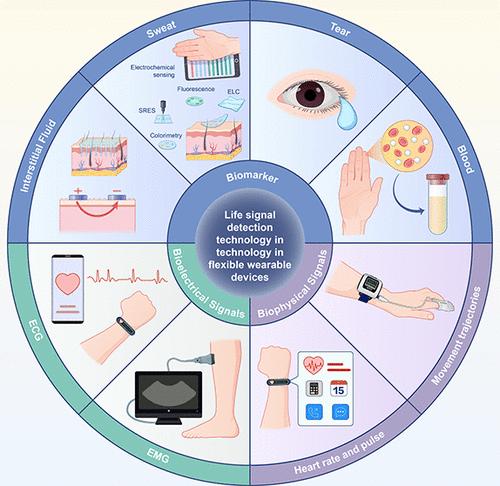推进运动心脏病学:将人工智能与可穿戴设备集成到心血管健康管理中
IF 8.2
2区 材料科学
Q1 MATERIALS SCIENCE, MULTIDISCIPLINARY
引用次数: 0
摘要
运动心脏病学关注的是运动员的心血管健康,然而,尽管采取了预防措施,心源性猝死仍然是一个值得关注的问题。长时间的体育活动会导致显著的心血管适应,即运动员的心脏,这可能类似于某些病理状况,使准确的诊断复杂化,并可能导致严重的后果,如不必要地被排除在运动之外或错过治疗机会。包括智能手表和智能眼镜在内的可穿戴设备在监测健康指标方面已经变得普遍,为运动心脏病专家提供了潜在的临床应用。这些设备能够发现运动引起的心律失常,发现隐藏的心脏问题,并为训练和恢复提供关键信息,以最大限度地减少与运动相关的心脏事件,增强心脏保健。然而,对数据准确性和所获得信息的可操作价值的关注仍然存在。一个主要的挑战在于人工智能与可穿戴设备的整合,在提供实时、可靠和临床相关见解的能力方面,研究差距仍然存在。将人工智能与可穿戴设备相结合,可以改善数据在运动心脏病学中的管理和使用方式。人工智能,特别是机器学习,可以对可穿戴设备收集的数据进行分类、预测和推断,从而彻底改变患者数据的使用。尽管人工智能在治疗慢性疾病方面已被证明有效,但其在运动心脏病学方面的应用研究有限,特别是在可穿戴设备方面,造成了一个需要解决的关键差距。本文回顾了市售可穿戴设备及其在运动心脏病学中的应用,探讨了如何将人工智能集成到可穿戴技术中以推动该领域的发展。本文章由计算机程序翻译,如有差异,请以英文原文为准。

Advancing Sports Cardiology: Integrating Artificial Intelligence with Wearable Devices for Cardiovascular Health Management
Sports cardiology focuses on athletes’ cardiovascular health, yet sudden cardiac death remains a significant concern despite preventative measures. Prolonged physical activity leads to notable cardiovascular adaptations, known as the athlete’s heart, which can resemble certain pathological conditions, complicating accurate diagnoses and potentially leading to serious consequences such as unnecessary exclusion from sports or missed treatment opportunities. Wearable devices, including smartwatches and smart glasses, have become prevalent for monitoring health metrics, offering potential clinical applications for sports cardiologists. These gadgets are capable of spotting exercise-induced arrhythmias, uncovering hidden heart problems, and offering crucial information for training and recovery, to minimize exercise-related cardiac incidents and enhance heart health care. However, concerns about data accuracy and the actionable value of the obtained information persist. A major challenge lies in the integration of artificial intelligence with wearables, research gaps remain regarding their ability to provide real-time, reliable, and clinically relevant insights. Combining artificial intelligence with wearable devices can improve how data is managed and used in sports cardiology. Artificial intelligence, particularly machine learning, can classify, predict, and draw inferences from the data collected by wearables, revolutionizing patient data usage. Despite artificial intelligence’s proven effectiveness in managing chronic conditions, the limited research on its application in sports cardiology, particularly regarding wearables, creates a critical gap that needs to be addressed. This review examines commercially available wearables and their applications in sports cardiology, exploring how artificial intelligence can be integrated into wearable technology to advance the field.
求助全文
通过发布文献求助,成功后即可免费获取论文全文。
去求助
来源期刊

ACS Applied Materials & Interfaces
工程技术-材料科学:综合
CiteScore
16.00
自引率
6.30%
发文量
4978
审稿时长
1.8 months
期刊介绍:
ACS Applied Materials & Interfaces is a leading interdisciplinary journal that brings together chemists, engineers, physicists, and biologists to explore the development and utilization of newly-discovered materials and interfacial processes for specific applications. Our journal has experienced remarkable growth since its establishment in 2009, both in terms of the number of articles published and the impact of the research showcased. We are proud to foster a truly global community, with the majority of published articles originating from outside the United States, reflecting the rapid growth of applied research worldwide.
 求助内容:
求助内容: 应助结果提醒方式:
应助结果提醒方式:


